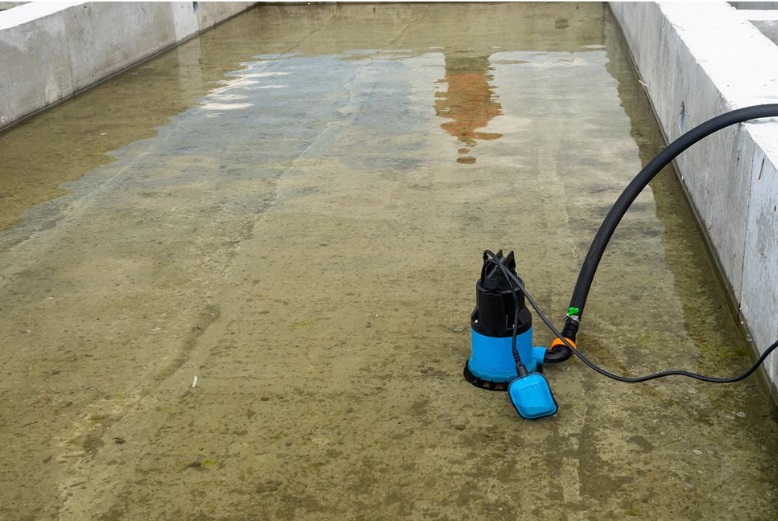Submersible pumps are engineered to operate while fully submerged in the fluids they handle, making them an effective choice for a variety of applications. This article delves into the components, operation, and benefits of submersible pumps, along with considerations for selecting the right one for your needs.
Components and Design
Submersible pumps are comprised of several essential components that work together to ensure smooth operation:
Motor Assembly: This is the core of the submersible pump. It contains the electric motor that drives the pump’s mechanism. The motor is encased in a waterproof housing to protect it from the fluid and environmental conditions. The design is robust to withstand continuous underwater operation and prevent water ingress.
Pump Assembly: The pump assembly includes the impeller and volute. The impeller is a rotating component that creates centrifugal force, pushing the fluid outwards. The volute, a spiral-shaped casing, collects the fluid from the impeller and directs it towards the discharge pipe. This assembly is critical for generating the flow and pressure required for effective fluid transfer.
Discharge Assembly: This part is responsible for guiding the fluid from the pump to its intended destination. It connects to the pump assembly and ensures that the fluid exits in a controlled manner, reducing turbulence and loss of efficiency.
How Does Submersible pumps Works?
Submersible pumps operate by being completely submerged in the fluid they are pumping. The submerged motor drives the impeller, which creates a flow of fluid through the pump. As the impeller rotates, it pushes the fluid outward and into the volute. The volute then channels the fluid towards the discharge assembly. This design minimizes energy losses as the pump works directly within the fluid, leading to higher efficiency. Additionally, being submerged helps in reducing noise levels, making submersible pumps quieter than surface-mounted pumps.
Applications of Submersible pumps
Submersible pumps are highly versatile and are employed in various sectors:
A. Water Supply: In residential settings, submersible pumps are used to draw water from wells. They are also utilized in irrigation systems to deliver water to agricultural fields. Their ability to handle varying flow rates makes them ideal for maintaining a steady water supply.

B. Wastewater Management: These pumps are essential in sewage and drainage systems. Submersible pumps handle wastewater effectively by pumping it from lower areas to treatment facilities or sewage systems. Their robust design enables them to manage solids and other debris commonly found in wastewater.
C. Industrial Processes: In industrial environments, submersible pumps are used to transfer chemicals, oils, and other fluids. They are preferred for their ability to operate in harsh conditions and their efficiency in handling fluids with different viscosities.
Advantages and Disadvantages of Submersible pumps
Advantages:
- Efficiency: Submersible pumps operate directly within the fluid, which reduces energy loss and improves overall efficiency. This direct interaction eliminates the need for long suction lines and reduces friction losses.
- Compact Design: These pumps are designed to be compact and can fit into confined spaces. This makes them suitable for installations where space is limited, such as in wells or underground tanks.
- Reduced Noise: Operating underwater significantly reduces the noise produced by the pump. This makes submersible pumps ideal for residential and commercial applications where noise levels are a concern.
Disadvantages:
- Maintenance Complexity: Servicing submersible pumps can be challenging because they are submerged in the fluid. Maintenance of submersible pumps often requires specialized equipment and expertise, and the pump may need to be removed from its installation for repairs or servicing.
- Cost: Submersible pumps are generally more expensive than surface pumps. The initial purchase cost, as well as maintenance and repair costs, can be higher due to the complexity of the design and the need for robust materials.
Choosing the Right Pump
Selecting the appropriate submersible pump involves a thorough assessment of several factors. It is crucial to ensure that the materials used in the pump are compatible with the type of fluid being pumped to prevent corrosion and damage.
The flow rate, or the volume of fluid the pump can handle, must align with the specific needs of your application to ensure efficient operation. Additionally, the head height, which is the vertical distance the pump needs to lift the fluid, should be sufficient to achieve the desired performance.
Material durability is also an important consideration; selecting a pump made from robust materials will enhance its longevity and reliability under operational conditions. By carefully evaluating these factors, you can choose a submersible pump that provides optimal performance and meets your specific requirements.
Conclusion
Submersible pumps are crucial for effective fluid management in various applications, from residential water supply to industrial processes. Their design, which allows for complete submersion in the fluid, offers significant advantages such as enhanced efficiency, a compact form factor, and reduced operational noise. However, they also come with challenges like complex maintenance and higher costs.
By understanding the components, operating principles, and key considerations for choosing the right pump, you can make informed decisions that ensure optimal performance and longevity. Properly selected and maintained, submersible pumps can provide reliable and efficient solutions for your fluid handling needs, contributing to smoother and more effective operations across multiple sectors. Contact Eddy Pumps to know more about submersible pumps.
Source: Eddypumps.com

